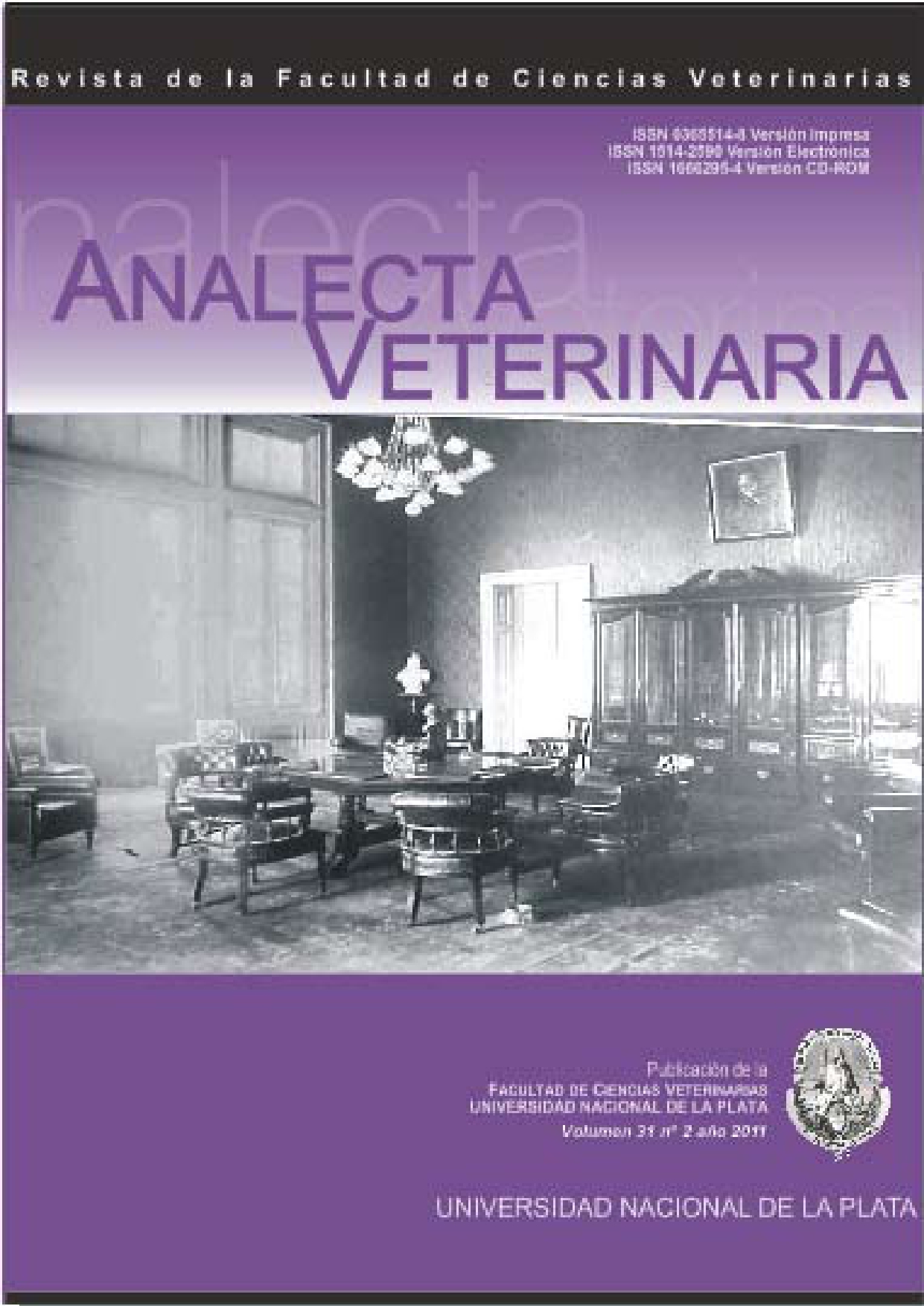Seroprevalence of Toxoplasma gondii and Neospora caninum in sheep in Uruguay
Mots-clés :
epidemiology, ovine, South AmericaRésumé
The objective of this study was to estimate the true prevalence of seropositive individual sheep against Toxoplasma gondii and Neospora caninum in Uruguay using the Rogan–Gladen estimator in combination with Monte Carlo simulation. Ten herds were kept under observation in 2008. Each study herd was randomly selected at different farms recruited from the Departments of Artigas, Salto and Canelones. The required total sample size was determined by power analysis, and blood samples collected were analysed using a commercial ELISA for the detection of antibody to the two pathogens mentioned above. The overall seroprevalence of Toxoplasma gondii and Neospora caninum were estimated at 38.9% (5th percentile of 36.5%; 95th perc. of 41.4%; N = 1361) and 0.7% (5th percentile of 0.1%; 95th perc. of 1.4%; N = 1357), respectively. Establishing prevalence distributions using Monte Carlo simulation could be useful for further risk assessment.
Références
Bonino J, Cavestany D. Aspectos de pérdidas re- productivas de origen infeccioso en ovinos. Producción Ovina. 2005, 17: 69–76.
Samra NA. Sero–prevalence and zoonotic implication of toxoplasmosis in sheep in South Africa. MVSc dis- sertation submitted to University of Pretoria, Pretoria (South Africa), 2006, p. 102, http://upetd.up.ac.za/thesis/available/etd-04112008-161617/unrestricted/dissertation.pdf, accessed on 23 June 2011.
Reichel MP, Rossa GP, McAllister MM. Evaluation of an enzyme-linked immunosorbent assay for the serological diagnosis of Neospora caninum infection in sheep and determination of the apparent prevalence of infection in New Zealand. Vet. Parasitol. 2008, 151 (2–4): 323–326.
Martin SW, Meek AH, Willeberg P. Veterinary epidemiology. Iowa State University Press, Ames (USA), 1987, p. 343.
FAO–AGAL. Livestock sector brief–Uruguay. http://www.fao.org/ag/againfo/resources/en/publications/sector_briefs/lsb_URY.pdf, accessed on 23 June 2011.
Ministerio de Ganadería Agricultura y Pesca (MGAP). Division Contralor de Semovientes (DI.CO.SE.). http://www.mgap.gub.uy/dgsg/DICOSE/dicose.htm, accessed on 23 June 2011.
FAO. FAOSTAT. http://faostat.fao.org/default.aspx, accessed on 23 June 2011.
Hintze J. PASS 2008 software. Kaysville(USA), 2008.
IDEXX. Controlling reproduction losses in herds–impact and diagnostics of four major abortive diseases: Neospora caninum. Animal Health Updates. 2007, http://www.idexx.com/view/xhtml/en_us/livestock-poultry/newsletter/2007/200708.jsf#fnn, accessed on23 June 2011.
Rogan WJ, Gladen B. Estimating prevalence from results of a screening–test. Amer. J. Epidemiol. 1978, 107(1): 71-6.
Freyre A, Bonino J, Falcón J, Castells D, Correa O, Casaretto A. The incidence and economic significance of ovine toxoplasmosis in Uruguay. Vet. Parasitol. 1997, 73 (1–2): 13–15.
Romanelli PR, Freire RL, Vidotto O, Marana ER, Ogawa L, De Paula VS, Garcia JL, Navarro IT. Prevalence of Neospora caninum and Toxoplasma gondii in sheep and dogs from Guarapuava farms, Paraná State, Brazil. Res. Vet. Sci. 2007, 82: 202-207.
Dohoo I, Martin W, Stryhn H. Veterinary epidemiologic research, 2nd ed. AVC Inc., Charlottetown (Canada), 2000, p. 865.
Téléchargements
Publié
Numéro
Rubrique
Licence
Los autores/as conservan los derechos de autor y ceden a la revista el derecho de la primera publicación, con el trabajo registrado con la licencia de atribución de Creative Commons, que permite a terceros utilizar lo publicado siempre que mencionen la autoría del trabajo y a la primera publicación en esta revista.

Analecta Veterinaria por Facultad de Ciencias Veterinarias se distribuye bajo una Licencia Creative Commons Atribución-NoComercial-SinDerivar 4.0 Internacional.




























